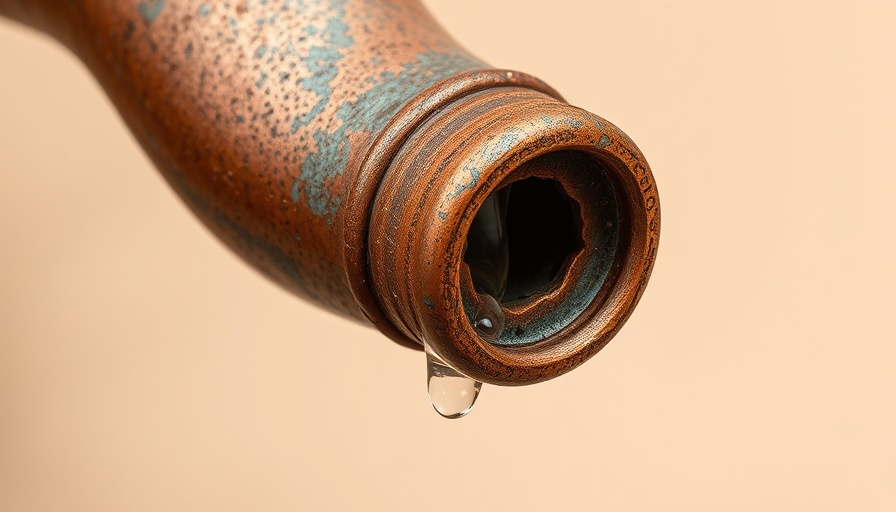
Understanding the Impact of a Burst Pipe
A burst pipe can transform a cozy home environment into a disaster zone within moments. This plumbing emergency often occurs due to freezing temperatures, where water inside pipes expands and eventually leads to cracks or complete ruptures. If you're caught off-guard by such an incident, acting swiftly is crucial. Not only can prompt action help mitigate damage, but it can also save you from costly repairs down the line.
First Steps: Shut Off the Water
The first critical step when you encounter a burst pipe is to locate and shut off the water main. In situations where the water freezes, the pressure can escalate to catastrophic levels—up to 40,000 psi, a force that is impossible for standard pipes to contain. By halting the water supply, you prevent further flooding, protecting your home’s structure and valuable belongings.
Relieving the Pressure: Open a Faucet
Once the water is shut off, relieving the pressure in the pipes is essential to preventing additional bursts. To do this, simply open a faucet. This action allows any remaining water pressure to dissipate, further reducing the risk of pipe damage.
Begin Cleanup: Removing Water
With newfound access to the leaking pipes, start removing standing water immediately. Utilize mops, buckets, and a wet/dry vacuum for this task. Quick removal is not just about dealing with water—it’s also crucial to preventing mold from developing in the damp environment.
Quick Heating Solutions
Cold environments can exacerbate the risk of bursting pipes. If your home has areas particularly vulnerable to cold temperatures, like basements or exterior walls, turning up the heat is vital. Use fans to circulate hot air and, where possible, employ a hair dryer to gently warm the pipes, especially those that are frozen. During this process, keep your faucet open to allow any melting ice to flow freely.
Keeping Access Available: Open Doors
Another preventative measure is to open doors to storage areas where pipes are exposed. Doors under sinks and in closets should be opened to allow warm air to reach the vulnerable pipes. Every little action counts when it comes to avoiding future incidents.
Creative Temporary Fixes
Sometimes you're not equipped with the necessary tools for immediate plumbing repairs. If you find that your pipe has a leak, you can improvise with household items. A piece of rubber over the leak, secured firmly with a clamp can act as a temporary measure. Additionally, placing a block of wood between the rubber and the clamp helps distribute pressure and prevent further damage.
When You Need a Permanent Solution: Cutting Out the Damaged Pipe
If you're knowledgeable about plumbing, cutting out the damaged section may be the next step. For this, ensure the main water supply is turned off. Once you’ve drained the affected line, utilize a pipe cutter to carefully remove the damaged portion, leaving enough room to fit a new section of pipe later. This solution, while more complex, can provide long-term benefits for the integrity of your plumbing system.
Future Prevention: Insulation is Key
To avoid these dreaded situations in the future, it's vital to insulate pipes properly, particularly those exposed to cold or fluctuating temperatures. Proper insulation can significantly reduce the likelihood of freezing, ultimately protecting your home from potential water damage.
While dealing with a burst pipe is daunting, being proactive and knowing the necessary steps can empower homeowners to manage the situation effectively. From immediate repairs to preventative measures, these handyman tips will help safeguard your home against future plumbing disasters. For anything beyond temporary fixes, consulting a qualified plumber can ensure that your home remains safe and secure.
 Add Row
Add Row  Add
Add 



Write A Comment